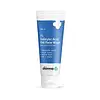What's inside
What's inside
 Key Ingredients
Key Ingredients

 Benefits
Benefits

 Concerns
Concerns

 Ingredients Side-by-side
Ingredients Side-by-side

Water
Skin ConditioningSodium Lauroyl Sarcosinate
CleansingAcrylates Copolymer
Sodium Hydroxide
BufferingCocamidopropyl Betaine
CleansingSodium Cocoyl Apple Amino Acids
Skin ConditioningEthylhexylglycerin
Skin ConditioningCamellia Sinensis Leaf Extract
AntimicrobialParfum
MaskingXylitylglucoside
HumectantAnhydroxylitol
HumectantXylitol
HumectantGlycolic Acid
BufferingCapryloyl Glycine
CleansingSarcosine
Skin ConditioningCinnamomum Zeylanicum Bark Extract
AntimicrobialMagnesium Ascorbyl Phosphate
AntioxidantCaffeine
Skin ConditioningDisodium Hydroxyethyliminodiacetate
Hyaluronic Acid
HumectantColostrum
Skin ConditioningWater, Sodium Lauroyl Sarcosinate, Acrylates Copolymer, Sodium Hydroxide, Cocamidopropyl Betaine, Sodium Cocoyl Apple Amino Acids, Ethylhexylglycerin, Camellia Sinensis Leaf Extract, Parfum, Xylitylglucoside, Anhydroxylitol, Xylitol, Glycolic Acid, Capryloyl Glycine, Sarcosine, Cinnamomum Zeylanicum Bark Extract, Magnesium Ascorbyl Phosphate, Caffeine, Disodium Hydroxyethyliminodiacetate, Hyaluronic Acid, Colostrum
Water
Skin ConditioningSodium C16 Olefin Sulfonate
EmulsifyingCocamidopropyl Betaine
CleansingGlycerin
HumectantCocamide Mea
EmulsifyingSodium Lactate
BufferingSalicylic Acid
MaskingSalix Alba Bark Extract
AstringentHamamelis Virginiana Extract
AntiseborrhoeicCoco-Glucoside
CleansingGlyceryl Oleate
EmollientPEG-120 Methyl Glucose Dioleate
EmulsifyingSodium Chloride
MaskingPhenoxyethanol
PreservativeTriethylene Glycol
MaskingDisodium EDTA
Water, Sodium C16 Olefin Sulfonate, Cocamidopropyl Betaine, Glycerin, Cocamide Mea, Sodium Lactate, Salicylic Acid, Salix Alba Bark Extract, Hamamelis Virginiana Extract, Coco-Glucoside, Glyceryl Oleate, PEG-120 Methyl Glucose Dioleate, Sodium Chloride, Phenoxyethanol, Triethylene Glycol, Disodium EDTA
Ingredients Explained
These ingredients are found in both products.
Ingredients higher up in an ingredient list are typically present in a larger amount.
Cocamidopropyl Betaine is a fatty acid created by mixing similar compounds in coconut oil and dimethylaminopropylamine, a compound with two amino groups.
This ingredient is a surfactant and cleanser. It helps gather the dirt, pollutants, and other impurities in your skin to be washed away. It also helps thicken a product and make the texture more creamy.
Being created from coconut oil means Cocamidopropyl Betaine is hydrating for the skin.
While Cocamidopropyl Betaine was believed to be an allergen, a study from 2012 disproved this. It found two compounds in unpure Cocamidopropyl Betaine to be the irritants: aminoamide and 3-dimethylaminopropylamine. High-grade and pure Cocamidopropyl Betaine did not induce allergic reactions during this study.
Learn more about Cocamidopropyl BetaineWater. It's the most common cosmetic ingredient of all. You'll usually see it at the top of ingredient lists, meaning that it makes up the largest part of the product.
So why is it so popular? Water most often acts as a solvent - this means that it helps dissolve other ingredients into the formulation.
You'll also recognize water as that liquid we all need to stay alive. If you see this, drink a glass of water. Stay hydrated!
Learn more about Water